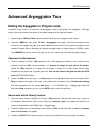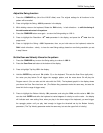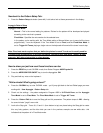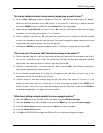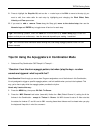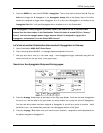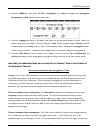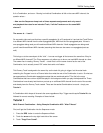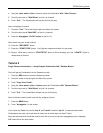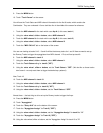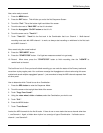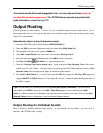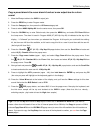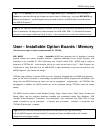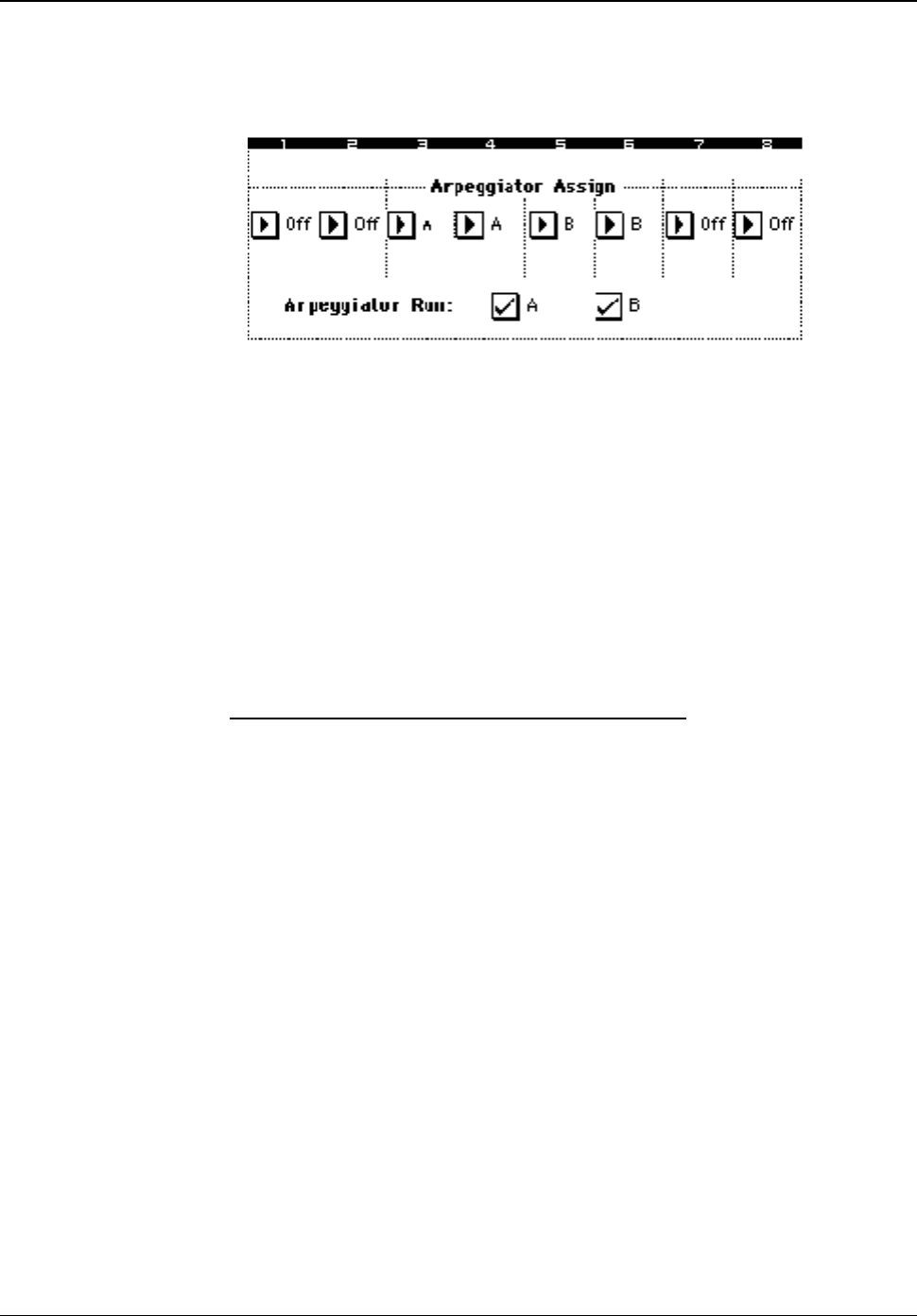
TRITON Training Guide
76
10. Press the MENU key, then press P7: Edit - Arpeggiator. The Setup tab displays the Arpeggiator
Assignments and Run status boxes for each timbre:
11. Press the Arpegg.A tab button in this page. Here again, you can set those familiar functions - tempo, the
pattern assigned, and in addition you'll see settings for Gate (length of pattern steps), Velocity (loudness
of pattern steps), and Swing (timing - shift of odd-numbered notes). Pressing the Arpegg.B tab button
will list the same functions - assigned to work independently for the pattern assigned to Arpeggiator B.
12. Press the Scan Zone tab button (bottom of the display). Here you can set Top and Bottom Key and
Velocity parameters for both Arpeggiators, and graphic displays show you the key and velocity zones.
Now that you understand arps you’re ready for our famous “How to Use Combis in
the Sequencer Tutorial:
Recording Combinations with Arpeggiation - Triton
Preface - In the Triton series workstations, Combinations which contain arpeggio patterns are set up using
two different approaches. As a result, there are two methods outlined in this tutorial to allow full use of all
Combinations in the Triton’s sequencer. Since the setting of arpeggiations vary from Combination to
Combination, this tutorial will teach by example using Factory Combis that exhibit these two different
behaviors. This information can then be applied to other Combinations you wish to use.
Points to remember about Combinations - A Combination is basically an arrangement of up to eight
Programs (singular sounds) that share a MIDI channel. The fact that multiple tracks share the same
channel allows you to hear and play these Programs together as a layer or split or both; as opposed to
hearing programs one at a time as would be the case with a Multi Channel setup. A Multi Channel Setup
would state that each Program had its own MIDI channel, which keeps played information and sound
separate for each Program.
Points to remember about arpeggiators - The Triton has the capability to put up to two arpeggio patterns
into a Combination, and have those Arps only trigger certain tracks. In other words, Arp. A could be
assigned to play only the Program on Track 1 of the Combination. While Arp. B is set to trigger Tracks 3 and



